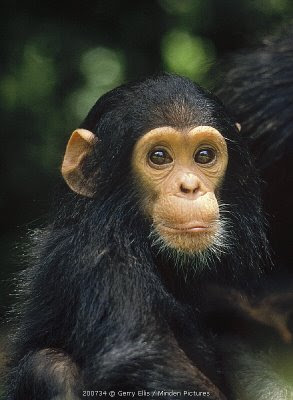Now, a decade later, I found myself looking back to the future. Wild Orphans once again is surfacing as my photographic savior, my sanity check, I need it. As NY Times op-ed columnist Frank Rich, "A decade that began with the “reality” television craze exemplified by “American Idol” and “Survivor” — both blissfully devoid of any reality whatsoever — spiraled into a wholesale flight from truth." As the last hours of 2009 flicker out, I realize I need 2010 to be a flight back to truth.
Appropriately, the decade's last December epitomized our collective disengagement from the truth - Tiger Woods, the UN Climate Change Conference in Copenhagen and the US sending 30,000 more troops to "win" a game that has no finish line, buzzer or top-of-the-ninth - or maybe our decade of delinquent decision-making was exclusively due to “bad intelligence,” (to coin a phrase by Bush administration alumni), that pushed us into these fiascoes. Unfortunately the tigers of truth, print journalists, are as rare as their Asian counterparts, and as the decade comes to a close, we are watch their habitat disappear as well. In Washington DC they opened the Newseum — "a 250,000-square-foot museum of news — offers visitors an experience that blends five centuries of news history with up-to-the-second technology and hands-on exhibits." As the director is quoted on the Newseum's own website, "Visitors will come away with a better understanding of news and the important role it plays in all of our lives,". Frighteningly we don't build museums to the living and vibrant, but to the vanishing and disappeared - is news habitat gone?
Much of 2010 I will be back on the road, exploring this planet, personal and public perambulations. In search of truth I already have some sense of where to look, but know many new roads will appear--filled with excitement and that tingling trepidation when perambulating on a precipice. But the search for truth will be alive, and that's what I crave and that's why so much of life is "blissfully devoid of any reality whatsoever — spiraled into a wholesale flight from truth." it's not alive. It's as if we have become our own avatars. Gleefully cocooning ourselves into our make-believe reality. And most frightening of all... as the climate conference in Copenhagen insanely pointed out - inside that reality we don't need to care.
I care. I have but this solitary existence. I have no guarantee of second chances, no do-overs,no redemption after missing the warning, or as the chorus rings out:
This is it
Make no mistake where you are
your back's to the corner
This is it
Don't be a fool anymore
This is it
the waiting is over
No room to run
No way to hide
No time for wondering why
It's here, the moment is now
So about Frost's road less traveled. I only know roads are man-made, and that any new road is not so much littered with leaves unworn by human footfalls, rather shiny tchotchkes of world blinded by it's own make-believe reality. "Follow them, use them and forget them.... Don't park. [roads] will get you there, but I tell you, don't ever try to arrive. Arrival is the death of inspiration." (Ernst Hass) Truth lives in inspiration.
A poster ad featuring Tiger Woods forebodingly chimes, "tougher than ever to be a Tiger." Paradoxically over the past decade the world has discovered that too, hiding from one lie, while not questioning the other. The caption on another Accenture Woods poster reads "It’s what you do next that counts." True enough for Tiger in 2010, but not just Tiger. Inside the cocoon I think it's easy for life to imitate art because you can never stand back far enough to get a proper perspective.
Nike’s chairman, Phil Knight, told The Sports Business Journal, in perhaps the most prophetic quote of the decade's closing month, that when Woods’s career "is over, you’ll look back on these indiscretions as a minor blip." Decades hence I think we will look back on this first ten year span of the new Millennium and realize there were too many "blips", I hope not too many for us too survive. Those blips, like the make-believe reality TV shows that launched the decade, held no truth.
Tomorrow morning is just another morning, but it begins a departure. I have reconstructed a camera bag - filled with all new Canon gear, three decades Nikon left behind; I have the love of my life that will see me through my days on this Earth; I travel first to India for a friend's wedding, a global wedding in a sense; then to Europe to understand why we are willing to suffering to know the truth about ourselves; and to East Africa in search of where all new roads began.





















